Robin Ryder
My artwork is a reflection of my experiences traveling through Peru, India, Mexico and the US while working as an archaeologist and anthropologist in the 1970s, 1980s and 1990s. As an anthropologist, thus a student of people and material culture, I have always been interested in how/why we assign value to certain objects. For me, objects that are well worn, or perhaps in various stages of decay hold intrinsic worth and beauty in the information they may contain and the history they evoke. Another person may find that same object worthless, even disgustingly ugly. As an archaeologist I have always been drawn to the visual and tactile qualities of the small fragments of objects which we recover from archaeological sites, whether a sea-tumbled shard of once fine china recovered from a shipwreck site, or a clay marble left behind by an 18th century child. These things have an embedded history that gives them content beyond their materials and they wear that history on their worn surfaces.
Many of my earlier works were constructed using non-traditional materials such as animal skulls, cake icing, found objects and unconventional supports. These often had content representing social themes such as gender-stereotyping or the violence that occurred in Peru as a result of the activities of Sendero Luminoso (Shining Path) and the government's brutal crackdown in the Ayacucho Department where I had lived and worked for a time. In my paintings, this postmodern concern with content was juxtaposed with traditional painterly concerns about the picture plane, materials, line, and so forth. As a result, many consisted of abstract geometric images which divided the work, or fractured the picture plane when seen from a distance, but which contained content when viewed from a closer perspective. Some challenged the notion of a flat, static picture plane by turning corners and being structured in a modular fashion so they could be put together in a number of different configurations lending a sculptural aspect to what would traditionally have been two-dimensional works
My recent work follows from the threads mentioned above. For example, my Mesa Verde and Teotihuacan shadow paintings use layering of color to create a sense of the solidity and depth of the ruins to contrast with the shadowy figures which transparently overlay them. This contrast expresses the timelessness of the ruins and their physical endurance in opposition to the ephemeral, shadowy nature of the humans who made them and the modern day person who is actively contemplating them. My teapot paintings are about formal art concerns, specifically about color, shape, and the play between foreground and background/flatness of the picture plane-that is the teapots and their shadows, but they are also expressive of my joyful, humorous take on the everyday material objects which fill up our lives as indicated by the use of color and the animated cartoon like quality of the teapots and their shadows.
Photo credit: Dan Mouer
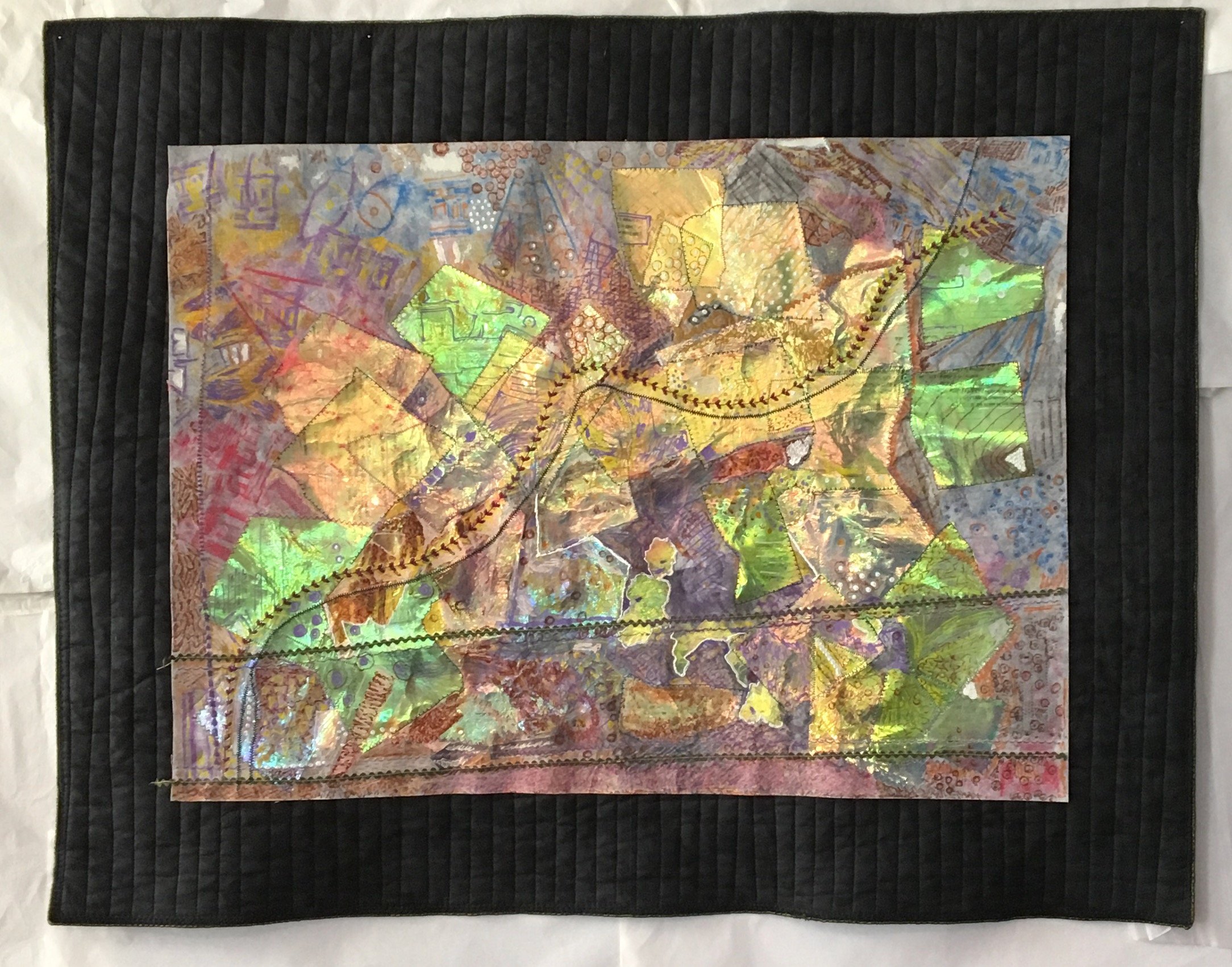
"Inflection," Mixed, 30” x 38”
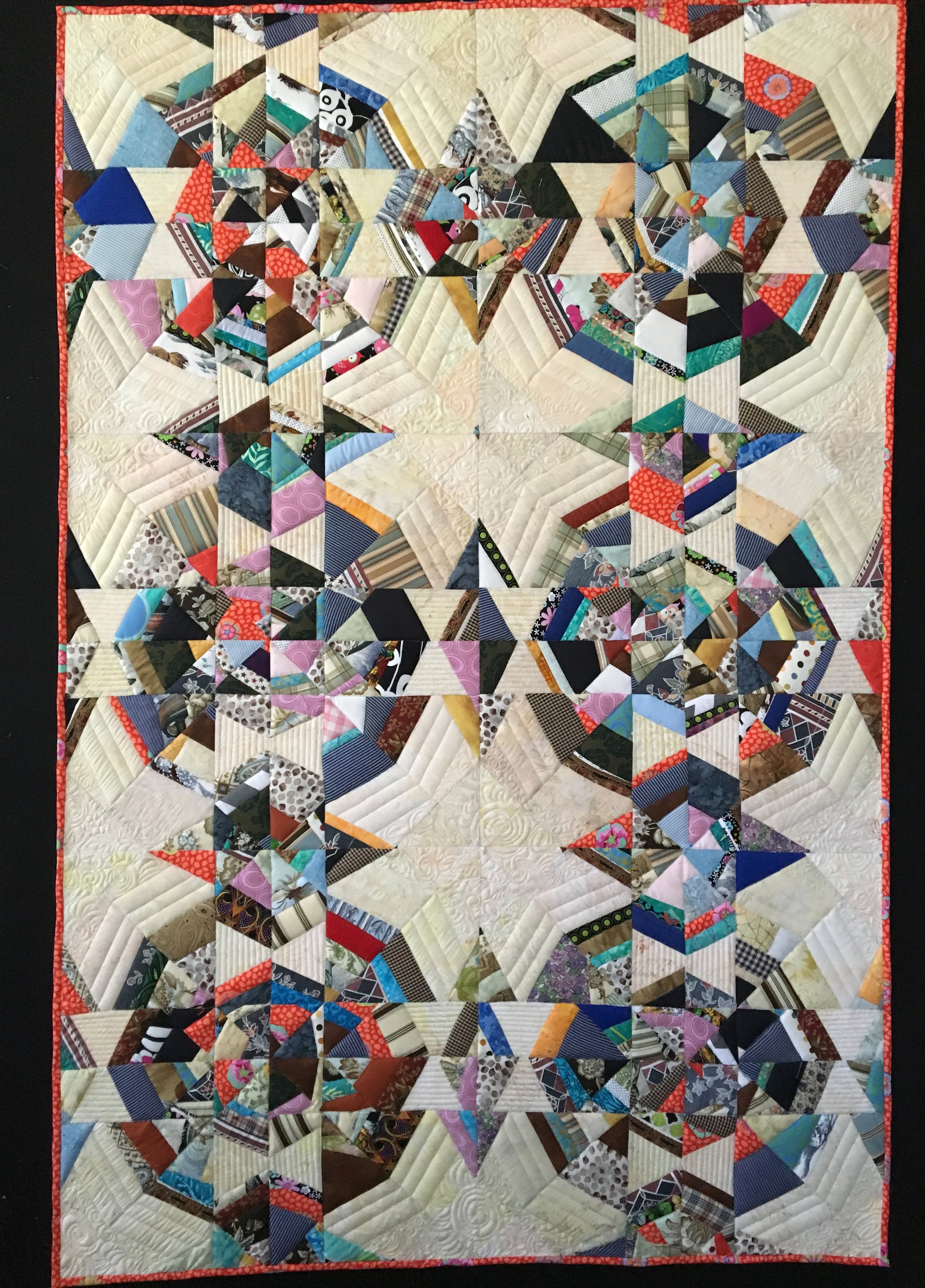
"Fractured Spider Web," Fiber/Quilt, 65” x 43”
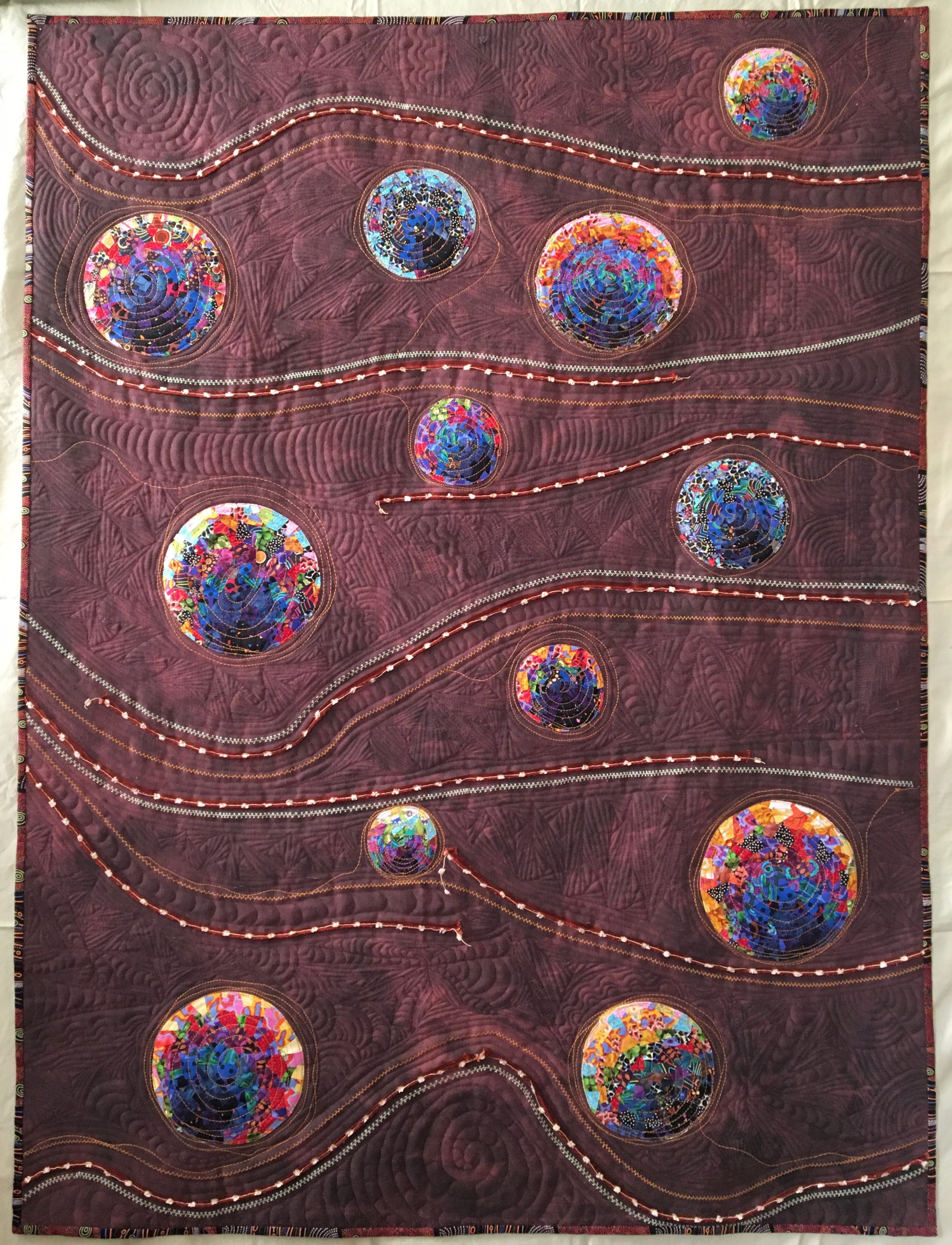
"Alien Artifact," Fiber/Quilt, 56” x 42”
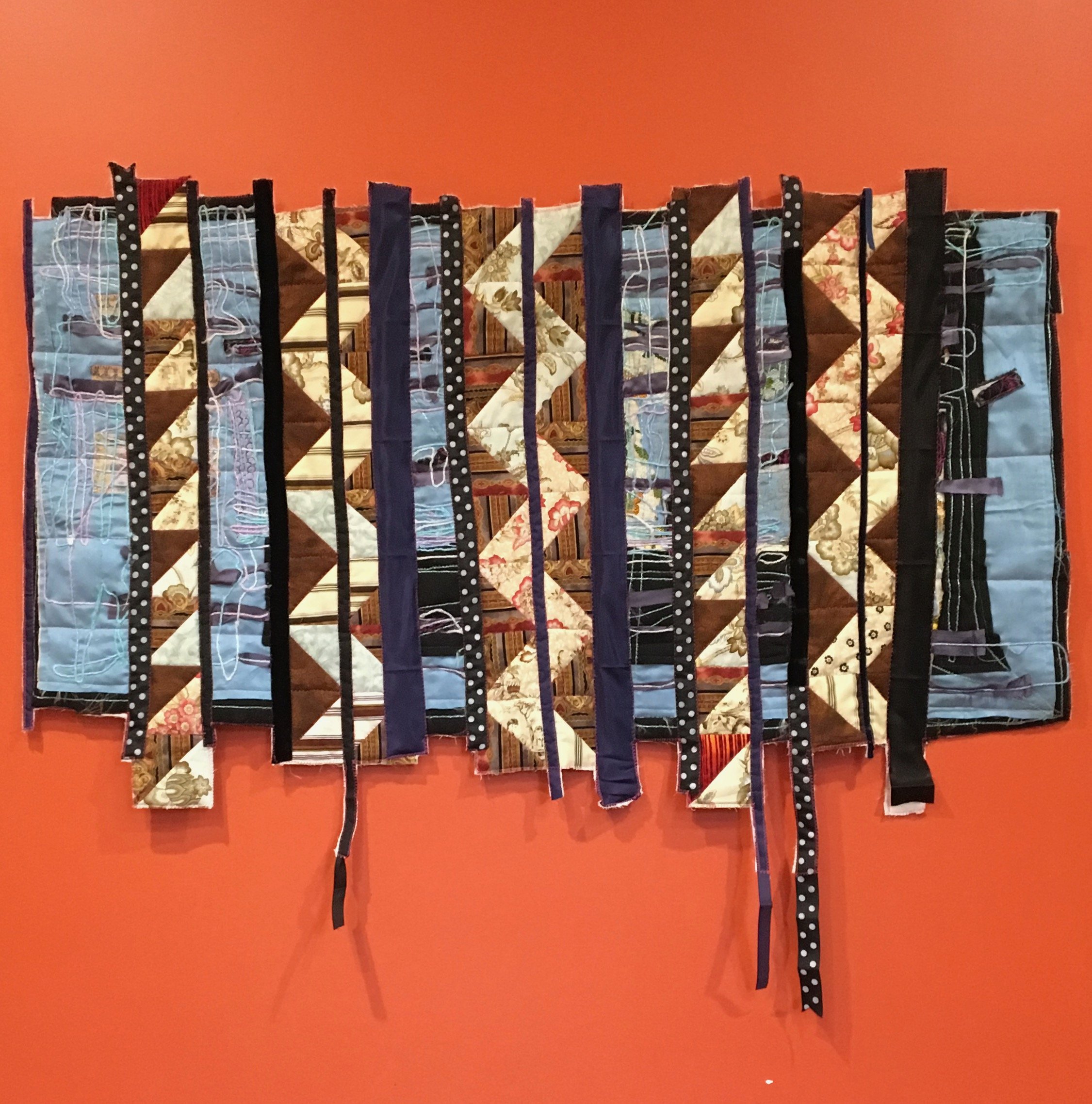
"Blue Bars," Mixed/Fiber/Quilting, 30” x 40”

"Terra Incognita," Encaustic, 6” x 6”
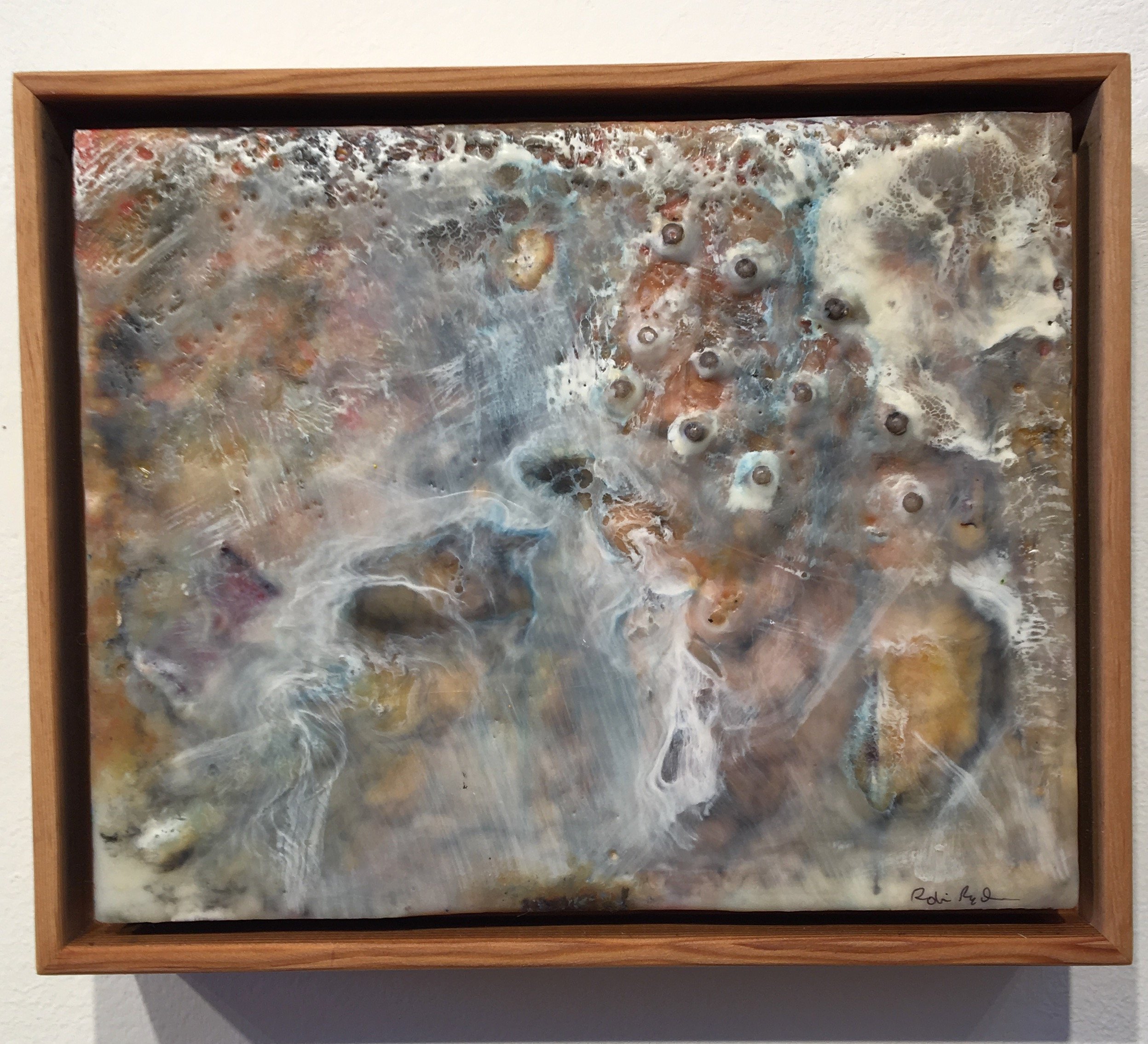
"Teotihuacan Rocks," Encaustic, 8” x 10”

"Teotihuacan 1"

"Teotihuacan 2"
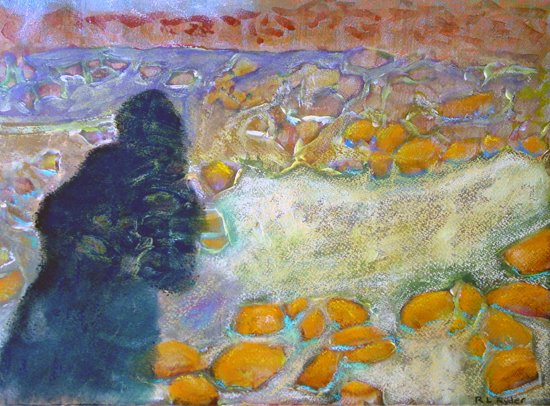
"Teotihuacan 3"

